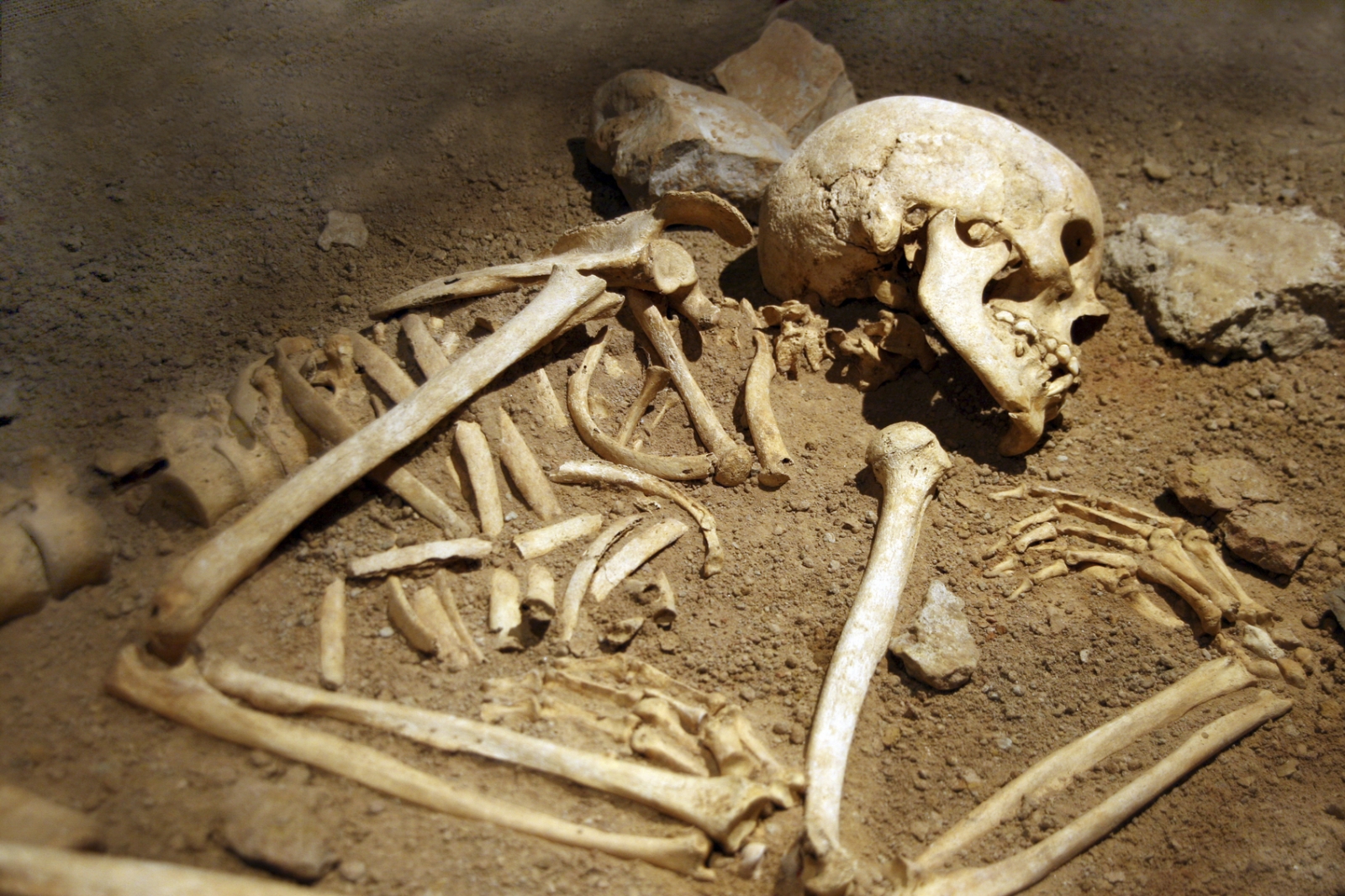'Hunchback of Torrenueva' unearthed in Roman cemetery in southern SpainArchaeologists have found the remains of a young man who suffered from Scheuermann's disease.
International Business Times
By Léa Surugue Updated May 18, 2017 10:52 BST
 Diagnosing diseases on ancient skeletons can be tricky (representational image)(Istock)
Diagnosing diseases on ancient skeletons can be tricky (representational image)(Istock)In an ancient Roman Necropolis located near Granada (southern Spain), archaeologists have unearthed the remains of a young man who had been suffering from a rare condition known as Scheuermann's disease, which would have given him a hunched back.
The skeleton was discovered during excavation work in the late Roman Necropolis of Torrenueva in 2008. The site had long been used as a quay, but as the economic crisis at the end of 3rd century CE hit the Romans hard, it was abandoned and turned into a cemetery.
In a study,
now published in the International Journal of Paleopathology, the archaeologists analyse one of the skeletons they found – discussing the different skeletal anomalies that they documented.
They estimate that this person would have lived which dated back to the late 3rd century or early 4th century CE.
Looking for ancient diseases
For archaeologists, identifying whether ancient individuals were suffering from diseases can be challenging. Indeed, conditions that leave clear marks on a skeleton are quite rare.
Scheuermann's disease (SD), is a skeletal disorder characterised by a kyphotic deformity of the spine (an abnormally convex curvature of the spine) which appears in early adolescence,. Today, it is very easy to diagnose and is quite common, affecting at least 0.4% of the population.
However, despite this relatively high prevalence, there has been few reports of the condition being identified on ancient skeletal remains.
Here, the bones of the skeleton are particularly well preserved, so they provided the archaeologists with an opportunity to try and identify signs of diseases.
First, they estimated the sex of this individual – a male – based on standard observations of pelvic features. Next, they examined the skeletal remains both macroscopically and with X-rays, looking for any evidence of congenital anomalies, nutritional disorders, infectious diseases, fractures or traumatic conditions. Finally, based on measurements of the bones, they built a three-dimensional (3D) model of the spine to evaluate the spinal curvature of this man.
Taken together, the results of these analyses suggest that his spine was characterised by a twisted, kyphotic curve. Ha also had a number of other skeletal malformations associated with an abnormal growth.
The evidence points to the fact that he was suffering from a severe form of Scheuermann's disease, but that other skeletal abnormalities observed would have allowed him to adapt to his spinal deformity and to walk without the aid of a stick. He nevertheless died between the age of 14 and 18, so far of unknown causes.
Interviewed by Spanish newspaper El Pais, study author José Miguel Jiménez Triguero said the young man would have shared similarities with the Hunchback of Notre Dame and that he would have lived at a time of great insecurity; the Roman Empire would have been in crisis and many people around him would have been fleeing the cities to find safety in more rural areas.
http://www.ibtimes.co.uk/hunchback-torrenueva-unearthed-roman-cemetery-southern-spain-1622094
![]() 6 new categories and 72 new items added to the shop!
6 new categories and 72 new items added to the shop!![]() 6 new categories and 72 new items added to the shop!
6 new categories and 72 new items added to the shop!